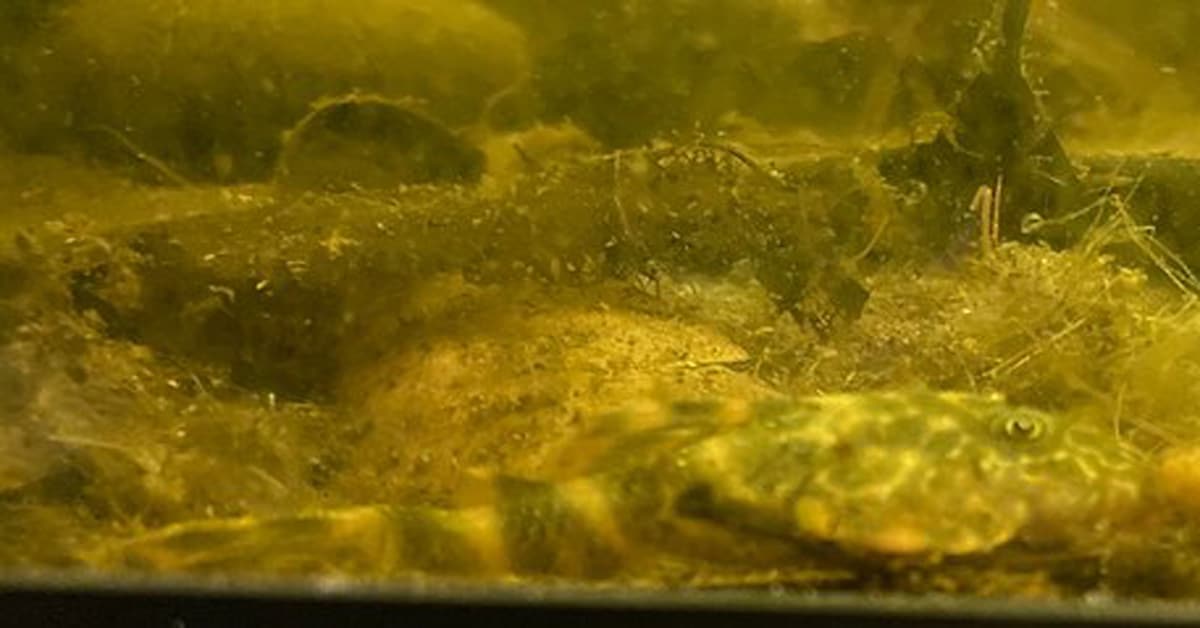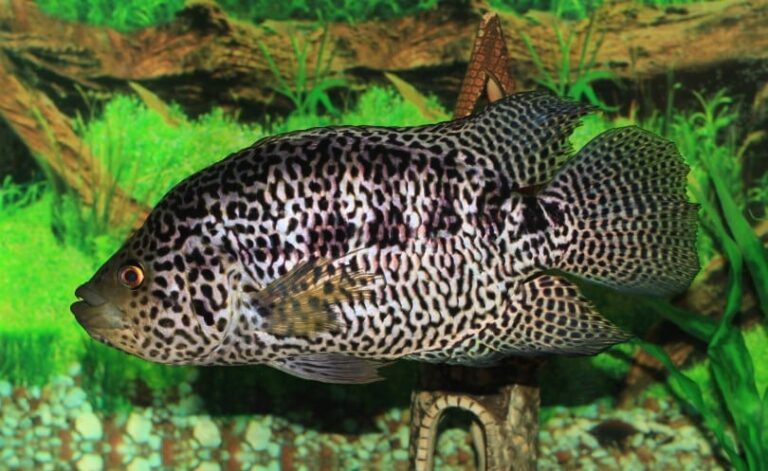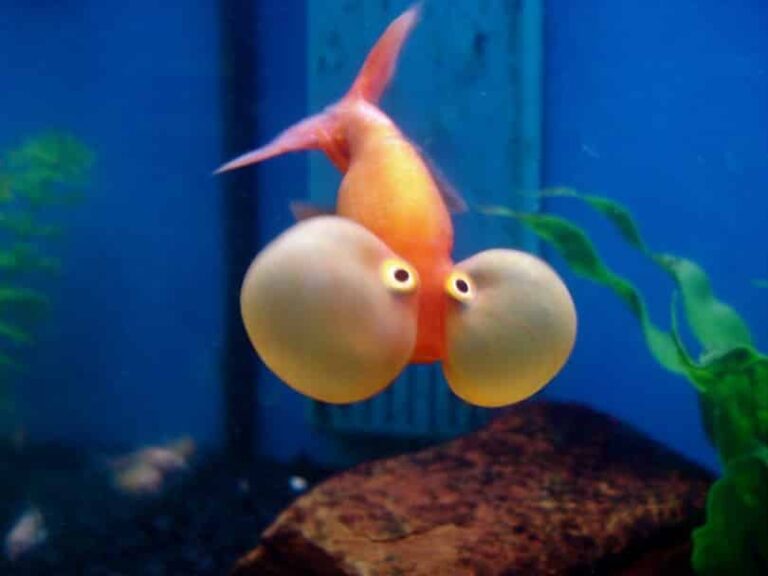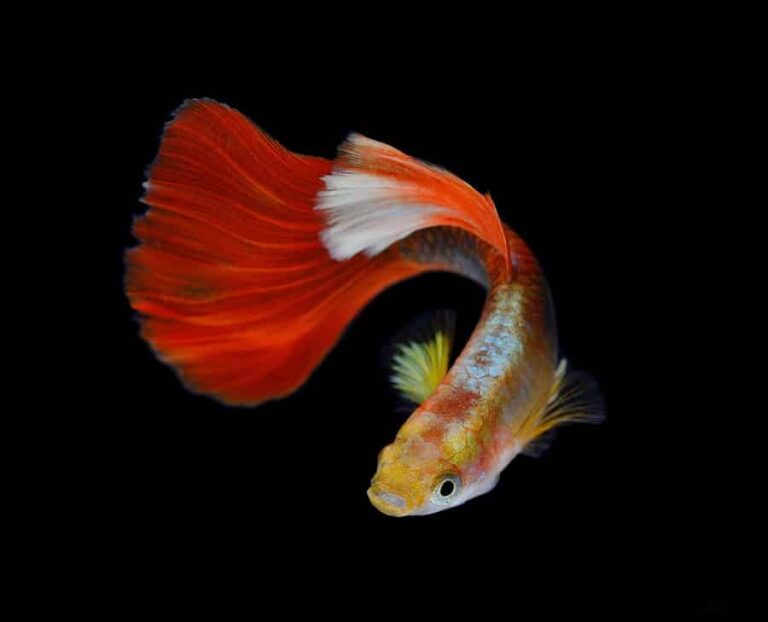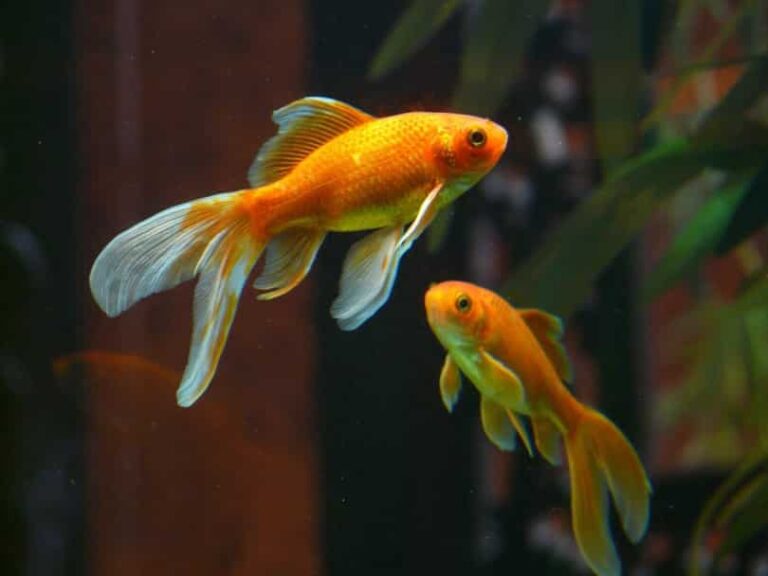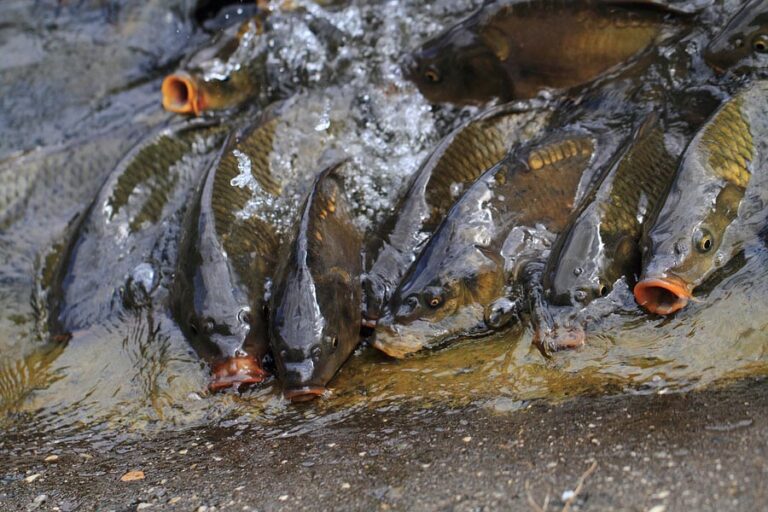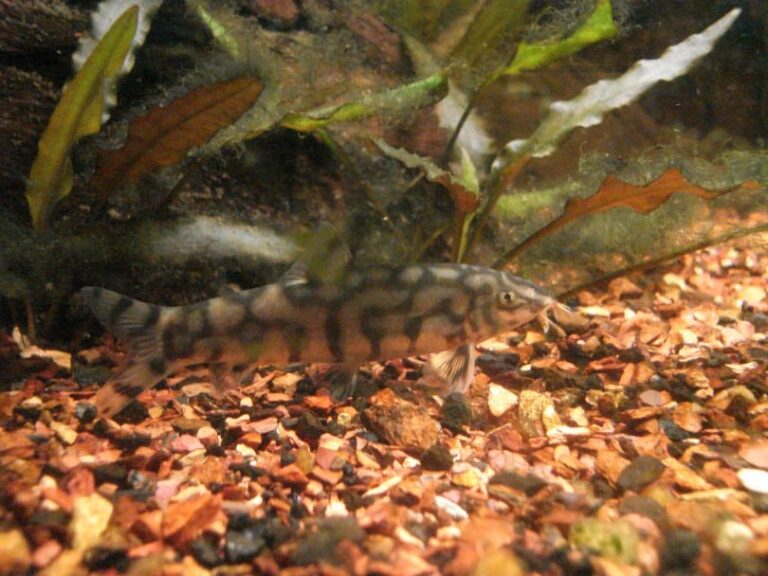Clown Pleco – A Vibrant Aquatic Being & Its Habitat
Looking for a unique addition to your aquarium? Then you should definitely meet the clown pleco.
This fish, known scientifically as Panaqolus Maccus, comes from South America’s rivers, especially the Amazon Basin. It’s known for its black and white patterns, which look like a clown’s costume. You can transform your freshwater tank into a captivating spectacle with the addition of this charming underwater performer.
In this article, we’ll try to enhance your understanding of how clown pleco has become a favorite among aquarium enthusiasts!
Origin & Natural Habitat
Although they are naturally prevalent in Venezuela, clown plecos have also been observed in Columbia. Clown plecos inhabit the Caroni and Apure River basins. These regions are the most densely populated.
Due to a combination of trees and flora along the coast of the swiftly moving water, these river basins are overflowing with debris and other pieces of wood. Clown plecos are very skilled at searching for places to hide and eat among the woody bottom, considering they are naturally adapted to the environment.
These fish can survive in reduced visibility and slightly polluted water thanks to the abundance of decomposing vegetation in their natural habitat.
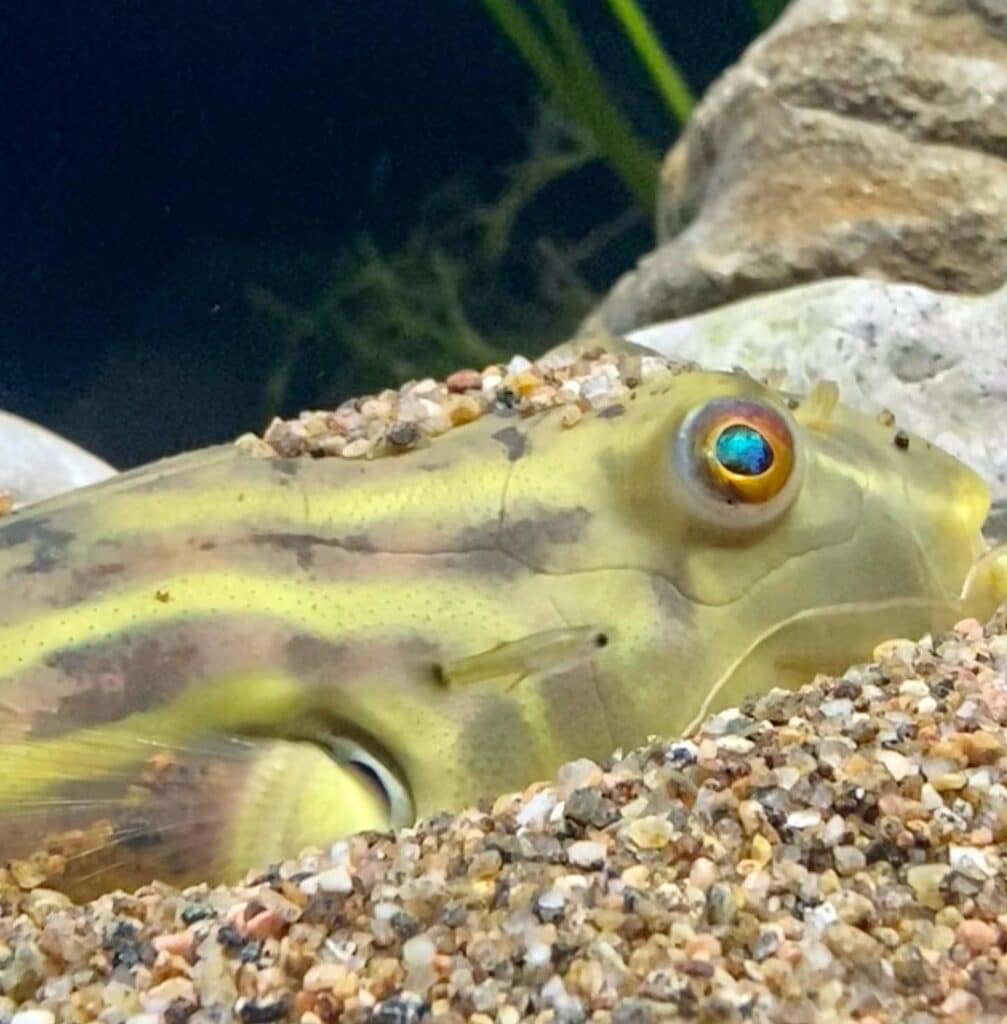
Appearance & Varieties
Clown plecos stand out more than other varieties of plecos due to their appearance, which includes a wide range of distinctive patterns and exquisite colorations. The body is covered in brighter-colored bands that wrap around it in varying designs, with a black basic base.
Yellow or white bands make up the brilliant parts. The bands might occasionally be white with orange flecks or white with yellow spots. The health and nutritional state of clown plecos affect their overall appearance.
The general sparkle and brightness of their bodies are also influenced by genetics. Surprisingly, if you take appropriate care of these fish from a young age, their color can be changed. Clown plecos in the wild appear to have more vivid colors than those raised in aquariums. This is mostly because they live in a stress-free habitat with plenty of space, enjoy wild foods, and have optimum water conditions.
Due to their ancestry as armored catfish, clown plecos have thick bodies, heads, and a big dorsal fin that resembles a sail. A clown pleco can reach a maximum length of 4 inches. Even though their average size is between 2.5 and 3 inches. You might see them reach an impressive size of 4 inches if it’s kept in an extensive aquarium!
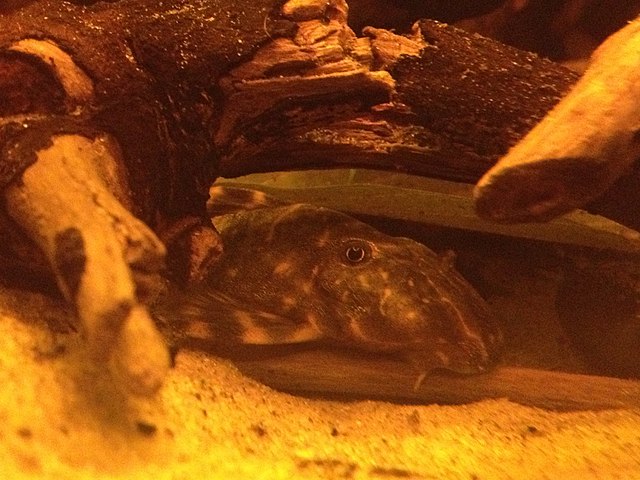
How to Take Care of Clown Plecos? 5 Main Considerations
1. Tank/aquarium size
Due to their small proportions, clown pleco can be kept in a tank as small as 25 gallons. If you maintain a community tank, the tank should hold at least 40 gallons to prevent crowded conditions. If you give your clown pleco a wide tank, you may provide its inhabitants with more room by adding multiple types of wooden logs and plants to prevent restricted tank anxiety.
2. Water temperature & pH
Clown plecos are adaptable to their surroundings and can be kept in a heated tank with a temperature range of 23°C to 27.5°C. The temperature shouldn’t change, and it’s preferable to keep it within a range that all of the other tankmates can tolerate. Water should have an acidic pH level that is maintained between 6.8 and 7.6.
3. Lighting
Clown plecos are accustomed to murky waters, so bright lighting makes them easily stressed and timid. Try to stay away from harsh artificial or natural illumination. You will observe your Clown pleco hiding out under decorations until dusk if you place the tank in a highly lit area.
4. Filtration
Clown plecos require a filter with an intense flow since they are native to rivers with strong currents. Since their surroundings need to be adjusted, you should aim to give them the aquarium current that does so. To cut down on waste and maintain pure water, you ought to also think about filters.
5. Substrate & Plants
Rough substrates have the potential to scrape and harm the underside of clown pleco. Although their backs are protected, their stomachs are made of fragile flesh, making them vulnerable to wounds that can quickly become infected. As a result, keeping these fish in aquarium sand or vast pebbles works nicely.
Clown plecos are fond of the aquarium’s live plant diversity. Plants like hornwort, Anubis, or Amazon swords are effective. To replicate their native habitat, the tank should be made with a sizable piece of driftwood.
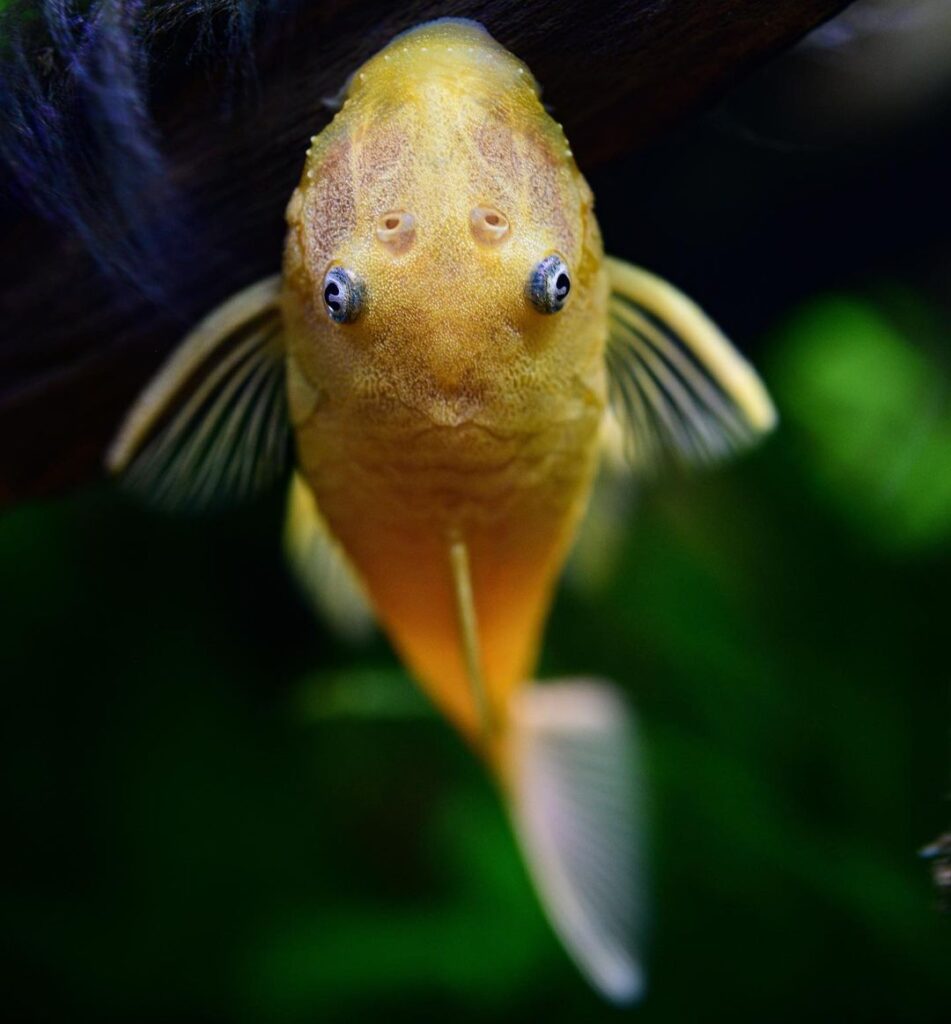
Choosing Tank Mates for Clown Pleco
The versatility of freshwater plecos is one of their best qualities. They don’t cause trouble and get along with any breed of fish as long as they are relaxed and peaceful. Avoid keeping clown pleco alongside dominant fish breeds since this can stress them out.
They will be harassed by some of the hostile tank mates, which will reduce their lifespan by years. If at all feasible, try to keep them in a tank with fish that get along with them and are typically found in their habitat.
Clown plecos make suitable tank mates with the following aquatic creatures:
- Cory catfish
- Rasboras
- Dwarf gourami
- Ember tetras
- Livebearers
- Angelfish
- Mystery snails
What to Feed Your Clown Pleco
Aim for balance in nutrition and refrain from overfeeding while planning a diet for clown pleco. Algae will make up a significant portion of their diet. Although they can’t rely solely on algae for food, they will greatly benefit from its nutritious content. Including driftwood, rocks, and plants in their habitat enables algae to thrive.
A clown pleco’s diet will also include a variety of other plant-based meals such as peas, lettuce, zucchini, and cucumbers. Last but not least, you should include some animal products in their diet to assist them in getting enough protein. The two most prevalent options are bloodworm and daphnia, however, you ought to serve these as a treat once or twice a week, not as a regular meal.
What is the Lifespan of a Clown Pleco?
Depending on how well they are cared for, clown plecos typically live for 10 to 12 years. This is one of the finest aspects of owning this breed of fish since you’ll have plenty of time to form a bond. If you refrain from providing your clown pleco with the right living conditions, just like any other fish, it will live considerably less.
Don’t let yourself be deceived into believing that they can tolerate poor care because of their tough nature. Years will be swiftly eliminated from their lives as a result of insufficient nutrition, poor water quality, and noise pollution.
Breeding Patterns
While some claim that clown plecos are simple to breed, others claim that even trying is too difficult. To clear up any confusion, clown plecos can be bred. It does need a little bit of setup, though.
It is advised to construct a breeding tank that adheres to many of the same parameters as their regular aquarium. Since this is where they will spawn, there should be plenty of driftwood and hiding spots. Placing a straightforward wooden cave in the tank is a classic approach, as fish frequently employ them.
Additionally, it is advised to slightly lower the water’s temperature before breeding. This will resemble the wet season when they typically reproduce in the wild. During this time, you should also slightly boost the pH levels. An increased intake of foods high in protein will encourage breeding, which is another useful strategy. Bloodworms and other tried-and-true solutions will unquestionably work.
The male will severely protect the spot for a few weeks after the eggs have been placed in the cave until they have hatched. When this occurs, you can separate them and start giving the baby clown plecos protein, algae, and driftwood as a part of their diet.
How Much Does a Clown Pleco Cost?
Clown plecos can be bought through trustworthy breeders, pet shops, and online retailers. Since they are cheap to keep, the price of their entire sale is modified to reflect their size, health, or quality. It will cost you anywhere from $4 to $12.
Consider the shipping fees before making an online Clown pleco purchase. This may give your fish the appearance of being more expensive, but the prompt shipment of livestock is crucial. Your pleco might not be alive or in excellent condition when it arrives if you arrange for shipping that takes days to arrive.
Conclusion
The Clown pleco fits in perfectly if you’re searching for a little, pretty bottom dweller that brings peace to a freshwater tropical aquarium.
In addition to being incredibly easy to care for, the clown pleco is a very rewarding fish to maintain. Clown plecos stand out in any aquarium thanks to their stunning appearance and distinctive motion. They will be delighted as long as you set up an appropriate aquarium habitat, comply with the advised water requirements, and keep them with other peaceful species

Nato is a content writer and researcher with a background in psychology who’s eager to explore the wonders of nature. As a travel enthusiast and animal lover, she hopes to inspire others to discover and cherish the beauty and importance of the natural world.

